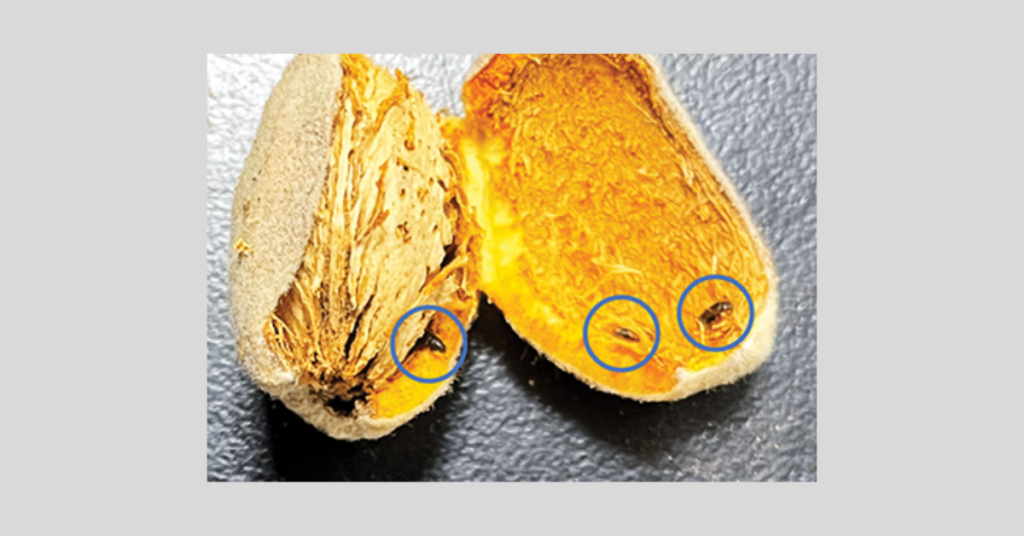
January/February 2024
Beware of carpophilus truncatus
Tree nut crops in California are faced with a new threat. The pest is called Carpophilus beetle (Nitidulidae: Carpophilus truncatus). Houston Wilson, associate cooperative Extension specialist at the UC Riverside Department of Entomology, provided National Nut Grower some important details about this pest.
“Carpophilus beetle has been a key pest of almonds in Australia for about 10 years. More recent reports have found it on walnuts in Argentina and Italy, so it appears to be spreading,” Wilson said. “So far, in California, we have found it on both almonds and pistachios in multiple counties across the San Joaquin Valley.”
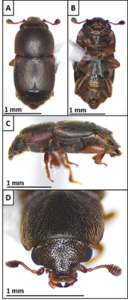
If the beetle is present in an orchard, Wilson said that growers may observe a “fine powdery frass on infested nuts” and added that “feeding activity from adults and/or larvae can also sometimes result in oval-shaped tunnels in the kernel.”
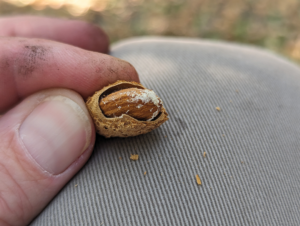
Tree nut growers can obtain more information on Carpophilus truncatus and remain updated on the latest observations in several ways.
“I’m working with my UC Cooperative Extension (UCCE) colleagues, as well as growers and pest control advisors (PCAs), to conduct a broader regional survey across the San Joaquin Valley, and we’ll be posting the findings online and in upcoming presentations as new data come in,” Wilson said. So far, confirmed populations of Carpophilus beetle have been in Stanislaus, Merced, Madera and Kings counties, which suggests the pest is already fairly widespread, he said.
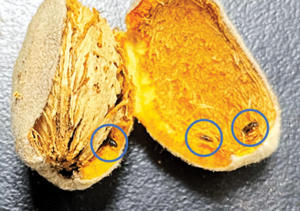
Crop sanitation is key to controlling the beetle. “Like navel orangeworm, this new Carpophilus beetle also overwinters in remnant mummy nuts, and so winter sanitation is fundamental to controlling it,” Wilson said “We cannot emphasize this enough, especially after the high levels of navel orangeworm damage we saw this year: timely and effective sanitation should not be a choice this year, it is an imperative.”
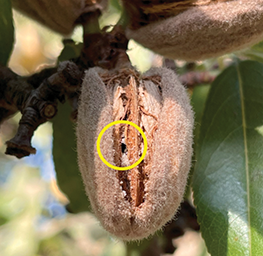
Wilson shared that both he and David Haviland, a UCCE Kern County farm advisor, are working with Australian colleagues to obtain resources and information that can assist California growers with Carpophilus truncatus infestations. He noted that Australia’s decade of experience with the pest will provide “a lot of good information, which will hopefully allow us to quickly get up to speed on best management practices to control Carpophilus truncatus.”







